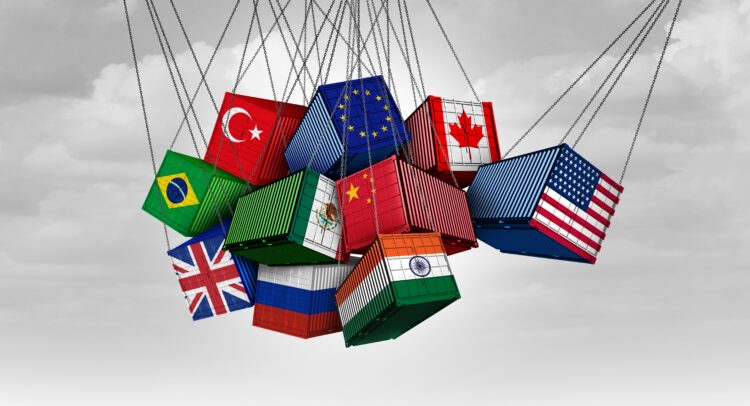U.S. customs agents began collecting President Donald Trump’s new 10% baseline tariff on imports from many countries early Saturday morning, marking a significant shift in the United States’ trade policy. These tariffs took effect at 12:01 a.m. ET on April 5, and apply to goods from countries including Australia, the United Kingdom, Brazil, Colombia, Argentina, and Saudi Arabia. Higher “reciprocal” tariffs, ranging from 11% to 50%, on products from 57 trading partners are set to take effect on Wednesday.
Tariff Structure & Timeline
Under the new tariff structure, European Union imports will face a 20% tariff starting Wednesday, while Chinese goods will be hit with an additional 34% tariff, bringing Trump’s total new levies on China to 54%. Vietnam, which benefited from U.S. companies shifting their supply chains away from China during Trump’s first term, will face a steep 46% tariff. However, the country agreed on Friday to negotiate a deal with the administration.
Canada and Mexico received exemptions from these latest duties. However, they still face a separate 25% tariff on goods that don’t comply with the rules of origin under the North American Free Trade Agreement. The administration also exempted 1,000 product categories, including pharmaceuticals, uranium, and semiconductors, though officials are considering new duties on some of these items.
For importers, U.S. Customs and Border Protection has provided some relief through a 51-day grace period. Cargoes loaded or in transit to the U.S. before the Saturday deadline will avoid the 10% duty if they arrive by May 27. However, no similar grace period has been announced for the higher reciprocal tariffs set to take effect on Wednesday.
International Response
Countries around the world are now weighing their responses to Trump’s latest trade actions, which have raised U.S. tariffs to their highest level in over a century. The move has effectively upended the global trading system that Trump has long criticized as unfair to American interests.
White House officials defended the tariffs on countries with trade deficits with the U.S., suggesting that many would run more significant deficits if their trade policies were fairer. Trump has framed the tariffs as a strategy to encourage domestic investment by companies seeking to avoid import taxes.
As businesses and trading partners adjust to this new reality, many economists and market analysts will be closely watching for potential inflation impacts, supply chain disruptions, and possible retaliatory measures from affected countries.
Market Impact
Financial markets reacted strongly to Trump’s announcement on Wednesday, with the S&P 500 index falling to its lowest level in 11 months. The subsequent two-day slide wiped out approximately $6.6 trillion in market value by Friday’s close – the steepest two-day drop since March 2020, when the pandemic first hit. U.S. Oil and commodity prices also tumbled as investors assessed the potential economic impact.
Traders will look for signs that the latest news has been reflected in stock prices on Monday or if fear has taken hold of investor sentiment. The latter could make for another long week across global markets.
















